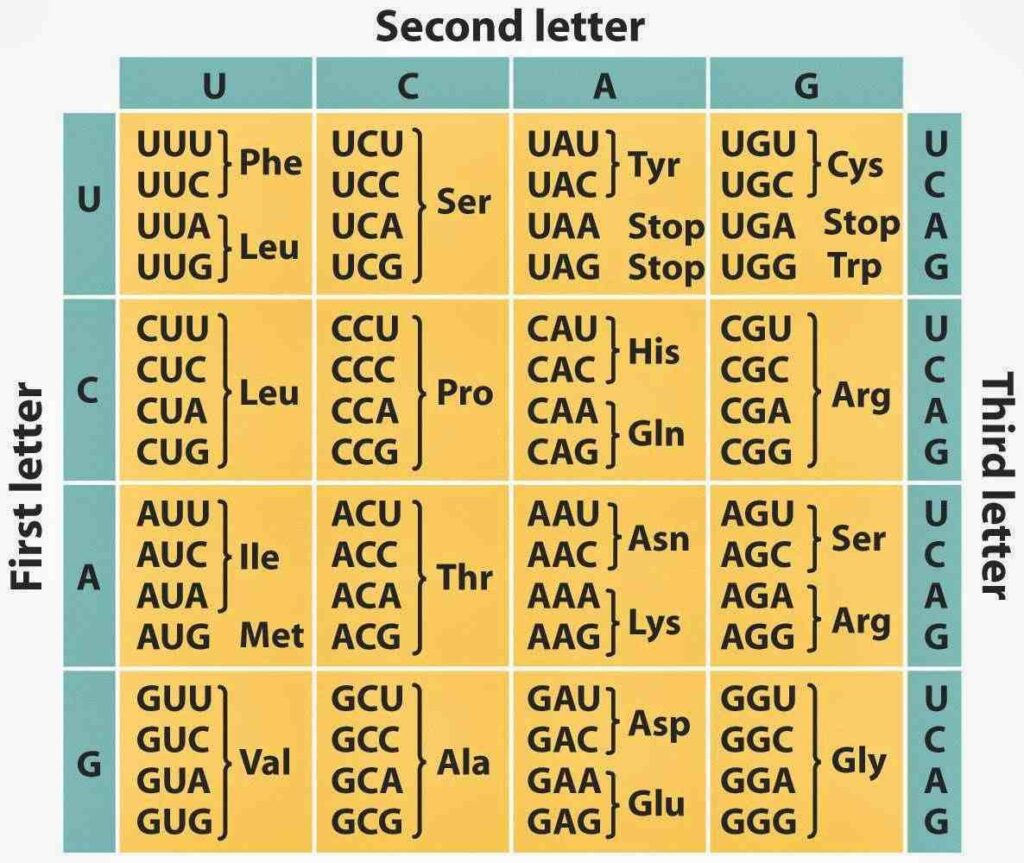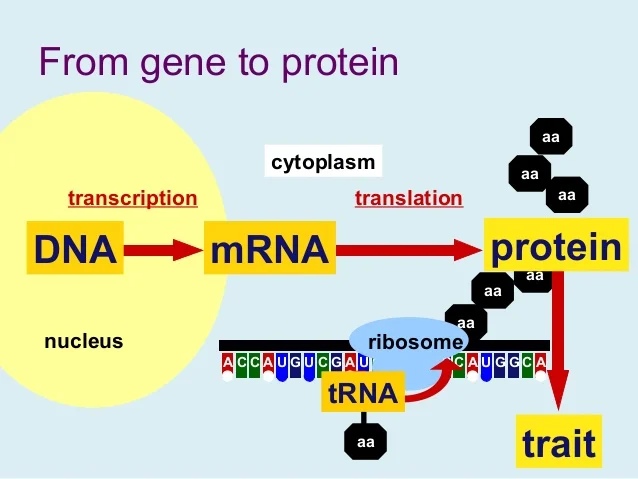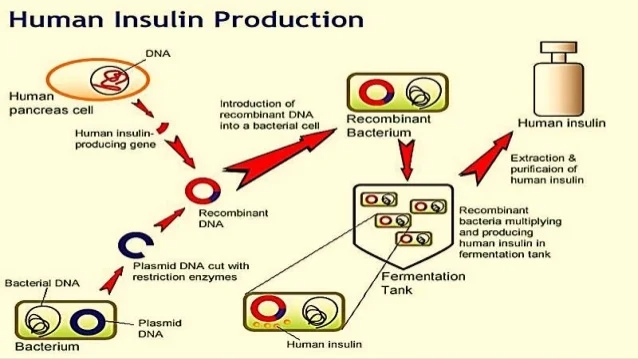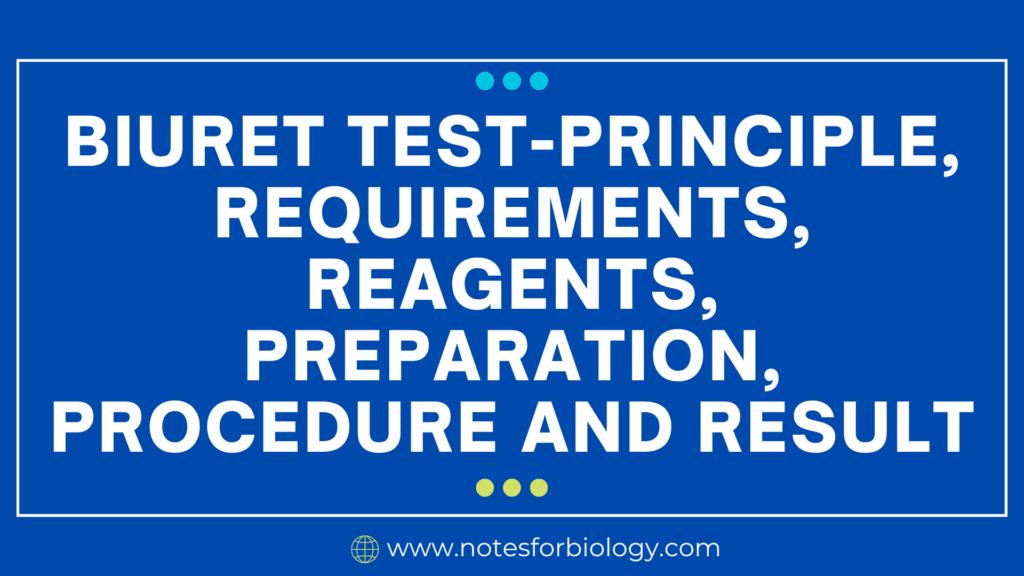1. Introduction
The genetic code is a set of instructions in DNA and RNA that tells cells how to make proteins. It reads sequences of three nucleotides (codons) to determine which amino acids to link together. Proteins are built from these amino acids and carry out essential life functions. Imagine a universal language that dictates the biological destiny of every living creature—from tiny bacteria to towering trees to humans. This language is the genetic code: a set of instructions encoded in DNA that tells cells how to build proteins, the tiny machines and tools of life. Just like any language, it has letters (nucleotides), words (codons), and grammar (rules). Yet, it’s both elegantly simple and amazingly complex.

In this friendly guide, we’ll explore the six key characteristics of the genetic code—explained clearly and with real-life examples. If you’re a student, a curious mind, or someone who just loves learning how life works, this guide is for you.
Table of Contents
2. Quick Primer: DNA → RNA → Protein

Before diving into characteristics, let’s quickly recap how DNA directs life:
- DNA (Deoxyribonucleic Acid)— The blueprint, made of four bases: A, T, C, G.
- Transcription— DNA is copied into messenger RNA (mRNA), where T is replaced by U (uracil).
- Translation— Ribosomes read mRNA in groups of three bases (codons). Each codon corresponds to an amino acid or a stop signal.
- Protein— Chain of amino acids folds into a functional structure, performing life’s tasks.
Everything—from hair color, metabolism, to blood type—arises from proteins made using the rules of this code.
3. The Six Hallmark Characteristics
Here are the six defining features of the genetic code, explained in simple, human-friendly terms:
3.1. Universality
- What it means: Nearly all organisms—bacteria, plants, animals—use the same codon table.
- Why it matters: The same ‘word’ in mRNA means the same amino acid, regardless of species.
- Example: The codon AUG means methionine in humans, yeast, and even molds.
- Reality check: Rare exceptions exist (like mitochondrial DNA), but the rule holds amazingly well.
3.2. Non-overlapping
- What it means: The genetic code reads bases in a strict frame: three at a time, no overlapping.
- Why it matters: One letter shift changes the whole meaning (a frameshift).
- Example: AUG-CUU codes “Methionine-Leucine”. Shifted (UGC-UU…), you’d get different amino acids.
3.3. Commaless
- What it means: Codons are read continuously with no ‘spaces’ between them.
- Why it matters: Ribosomes march along three bases at a time—no ambiguity.
- Example: AUGCUUAAA… is grouped as AUG|CUU|AAA, not overlapping like AUGC|TUU…
3.4. Degenerate (Redundancy)
- What it means: Multiple codons can specify the same amino acid.
- Prevalence: Of the 64 codons, 61 encode amino acids and 3 are stop signals.
- Examples:
- Leucine has 6 codons (e.g., UUA, UUG).
- Arginine and serine also have 6 codons.
- Basic amino acids like methionine and tryptophan have only 1 codon.
- Benefit: This redundancy provides error tolerance.
- A mutation in the third base often doesn’t change the amino acid (wobble).
- For example, GGU (glycine) → GGC still makes glycine.
3.5. No Ambiguity
- What it means: One codon always corresponds to one amino acid; there’s no confusion.
- Contrast with words: Unlike the English word “bat” (bird/animal/club), GGU always means glycine.
- Importance: Guarantees accurate protein building and consistent cell function.
3.6. Start and Stop Signals
- Start codon: Usually AUG, telling the ribosome, “start building here.”
- Stop codons: UAA, UAG, UGA—signal end of translation, releasing the chain.
- Clarity of boundaries: Ensures proteins are built with the correct sequence and length.
4. Biological Implications
Let’s explore how these characteristics play out in real life and in biotech:
4.1. Evolution & Natural Selection
- The redundant code helps protect organisms from harmful mutations.
- Cells can tolerate minor DNA changes without protein errors.
- Mis-sense mutations (amino acid change) happen less due to wobble effect.
4.2. Genetic Engineering & Biotechnology
- Universality allows gene transfer: You can insert a bacterial gene into human cells, and it still works (e.g., insulin production).
- With genetic tools, start codons can be placed strategically to initiate custom proteins.
4.3. Silent Mutations: A Hidden Twist
- Not all silent mutations are truly “silent.”
- Changing codon usage can affect how quickly a protein is made.
- For viral vaccine design, altering codon usage can safely weaken the virus—a clever approach in bioengineering.
4.4. Frameshifts & Disease
- A mutation that adds or deletes one or two bases changes the reading frame—catastrophic.
- Example: A single base deletion in dystrophin gene causes Duchenne muscular dystrophy, due to protein truncation.
4.5. Stop Codon Readthrough & Regulation
- Rarely, cells can override stop codons via special signals, creating extended proteins.
- Cells sometimes intentionally manipulate stop codon signals to regulate protein structure.
5. Delving Deeper
5.1. The Wobble Hypothesis
- The third base in a codon is less stringent in pairing (wobbles).
- For example, GGU, GGC, GGA, GGG all code glycine.
- This flexibility is built into the system to reduce errors and energy costs.
5.2. Codon Bias and Expression Efficiency
- Organisms often prefer certain codons over others—for example, E. coli prefers GGU over GGA for glycine.
- When expressing a human gene in bacteria, codon optimization is used to enhance protein yield.
5.3. Exceptions & Variations
- Mitochondrial code: In human mitochondria, UGA can code tryptophan instead of being a stop.
- Ciliate protozoans may have different assignments.
- These are exceptions but underscore the code’s adaptability.
5.4. Synthetic Genetic Code
- Scientists engineer “unnatural” codons to incorporate new amino acids into proteins.
- This expands the possible diversity of biologically engineered molecules—an exciting frontier in synthetic biology.
6. Real-World Examples
Example 1: Insulin Production

Human insulin gene inserted into bacteria uses the same code—bacteria make human insulin reliably.
Example 2: GMO Corn
Genetically modified corn has a bacterial gene for the Bt toxin, making it insect-resistant.
Example 3: CRISPR Gene Editing
CRISPR changes single bases precisely. Because codons are non-overlapping, a single base edit adjusts exactly one amino acid.
7. Clinical Relevance
- Genetic disorders often arise from codon mutations.
- Sequencing pinpoint codon changes, guiding personalized medicine.
- mRNA vaccines use synthetic codons to direct host cells to build viral spike proteins.
8. Summary Table of Characteristics
| Characteristic | What It Means | Why It Matters |
|---|---|---|
| Universal | Same code in nearly all organisms | Enables biotechnology, like insulin from bacteria |
| Non-overlapping | Read strictly in groups of three | Prevents misreading of genetic information |
| Commaless | No internal spaces or pauses | Smooth, continuous message |
| Degenerate | Multiple codons for the same amino acid | Provides error tolerance |
| Unambiguous | Each codon codes only one amino acid | Ensures precise protein construction |
| Start/Stop Codons | Defines where protein building starts and stops | Maintains proper protein length and structure |
9. Why Study These Characteristics?
- For Learners: Helps you understand how DNA becomes a working protein blueprint.
- In Real Life: Critical for gene therapy, vaccine design, and drug development.
- In the Classroom: A great area where biology and coding share similar logic.
- In the Future: The foundation for synthetic biology and genetic editing.
11. Conclusion
The genetic code is one of nature’s most elegant designs—simple in its rules but vast in its power. Its characteristics—universality, non-overlapping design, commaless structure, degeneracy, unambiguity, and start-stop signals—ensure DNA is reliably translated into proteins.
Understanding these characteristics isn’t just about memorization. It’s thinking about biology at its deepest—how molecules communicate life and how we, as curious humans, can read, interpret, and even rewrite that message.
Next time you think about DNA, remember it’s more than a molecule—it’s a universal code, a three-letter-at-a-time instruction manual for life.
Frequently Asked Questions
What is the genetic code?
The genetic code is a set of instructions in DNA and RNA that tells cells how to make proteins. It reads sequences of three nucleotides (codons) to determine which amino acids to link together. Proteins are built from these amino acids and carry out essential life functions.
Why is the genetic code considered universal?
Because almost all living organisms—from bacteria to humans—use the same codons for the same amino acids. For example, the codon AUG codes for methionine in both humans and bacteria.
This universality allows scientists to transfer genes between species, like inserting a human insulin gene into bacteria to produce insulin.
What does it mean that the code is “non-overlapping”?
It means that once translation starts, the ribosome reads the mRNA three nucleotides at a time (one codon), without sharing bases between codons. So if a sequence is AUGCUU, it’s read as AUG (1st codon) and CUU (2nd codon)—not AUG, then UGC, etc.
Related Articles




